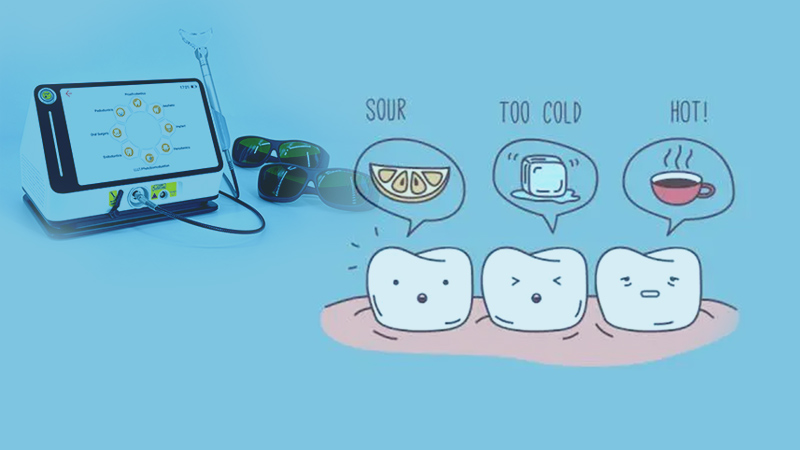
Dentin hypersensitivity is a common clinical disease characterized by rapid onset, short time and sharp pain. Currently, clinical treatments include drug desensitization therapy, repair therapy and laser therapy. However, the first two methods have disadvantages such as poor long-term efficacy or tooth tissue grinding, so the acceptance of patients is low. Laser therapy began in the 1880s, and its advantages such as simple operation, safety and non-invasive are widely praised by patients.
At present, there are two main mechanisms of laser treatment of dentin hypersensitivity. First, after laser irradiation of dentin, the hot melt mechanism caused by tissue absorption of heat is notified to reduce or close the dentin tubules, so as to reduce the influence of external stimulation on pulp. Another mechanism is to cause neurophysiological changes in the dentin tubule in the area irradiated, reducing the responsiveness of nerve fibers to stimulation.
Clinically used in the treatment of dentin hypersensitivity is mainly divided into low energy laser and high energy laser. It is generally believed that the mechanism of high energy laser in the treatment of dentin allergy is that the thermal effect of laser can seal the exposed dentin tubules in an instant, so as to achieve the purpose of desensitization. But high-energy lasers can cause excessive heat damage to the pulp. Low energy laser has a strong biological effect, can cause the maximum effect of nerve fiber permeability changes to potassium and sodium ions, increase the action potential of nerve endings, and stimulate the formation of nerve axon brown skin, reduce nerve excitability and thus play a role in analgesia. So lower energy is safer. Pioon's dental laser has LLLT classification, which can better solve the problems of dentin hypersensitivity for patients. If you want to know more detail information, please contact us.